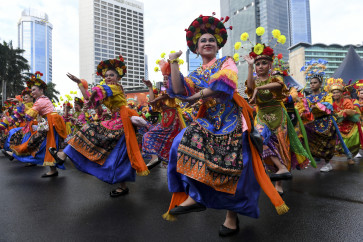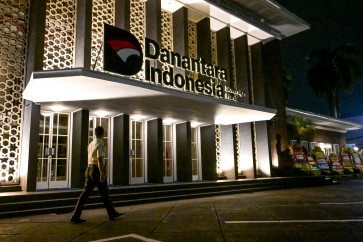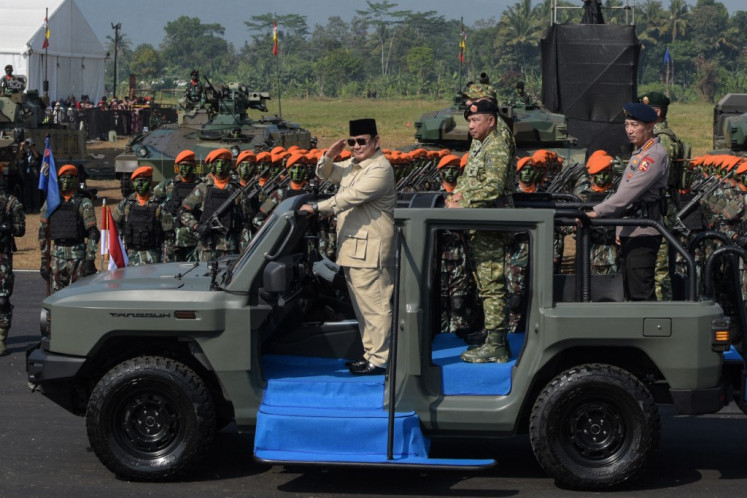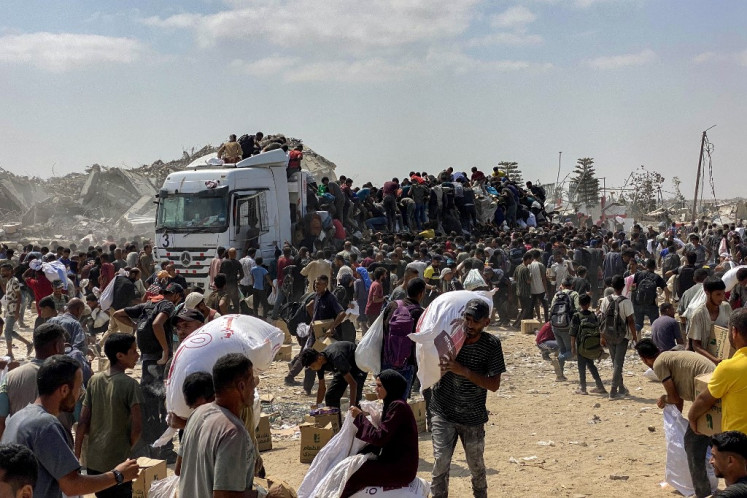Popular Reads
Top Results
Can't find what you're looking for?
View all search resultsPopular Reads
Top Results
Can't find what you're looking for?
View all search resultsEast Java town of Pacitan celebrates ancestors, 632rd anniversary
Ki Bonokeling, Ki Setroketipo and Kanjeng Jimat probably never imagined their lives in Pacitan would continue to be remembered by their descendants until today
Change text size
Gift Premium Articles
to Anyone
Ki Bonokeling, Ki Setroketipo and Kanjeng Jimat probably never imagined their lives in Pacitan would continue to be remembered by their descendants until today.
But it was at their graves that Pacitan residents recently held a series of celebrations to mark the East Java town's 623rd anniversary.
Unlike most cemeteries, the graveyard complex of Giri Sampoerno in Tanjung Asri village of Pacitan subdistrict is located on the top of a hill.
The graves there cover most parts of the hill, which is located one kilometer away from the heart of the town where President Susilo Bambang Yudhoyono grew up.
The grave of Joyoniman, also known as Kanjeng Jimat, the 12th Pacitan regent who is remembered as the great leader who developed the town, can be found there.
He was also considered a holy man because it was through him that Islam began to spread through Pacitan.
"After Kanjeng Jimat gained power, Pacitan grew to become an advanced region," Imam Koesno, a senior citizen who is also the juru kunci (caretaker) of Kanjeng Jimat's grave, told The Jakarta Post.
Pacitan is known as the place where Javanese kings went to meditate and the place where the great Sudirman, a national hero, chose to hide when he was being pursued by the Dutch.
"I heard there's one cave where kings meditated and which was also used by the late former president Soeharto," Fathoni, head of the Pacitan Tourism Office, told the Post.
The history of Pacitan started with the arrival of Ki Bonokeling -- one of the messengers of King Brawijaya who was sent to the area bordering East Java and Central Java in the 12th century. Ki Bonokeling's descendants remained as significant figures for four generations.
When Islam arrived, the fourth Ki Bonokeling, the area's ruler, objected when Kyai Ageng Petung, who was also spreading Islam in Java, brought his religion to Pacitan. The two clashed and waged war.
It was believed the fourth Ki Bonokeling held divine powers which rendered him immortal.
However, Kyai Ageng Petung killed him by cutting his body into three; each body part was then buried in a different location and separated by a river. From then on, Islam began to grow in Pacitan.
The name Pacitan itself is believed to come from the word pace -- the fruit of the small bengkudu tree; the roots of which are used to produce dyes.
King Mangkubumi, who recovered from paralysis by drinking the juice of the fruit, was believed to be the first to mention the name. Setroetipo, a fifth-generation descendant of Bonokeling and who was a Muslim, was the person who gave the juice to Mangubumi.
"The story continued until Pacitan was controlled by Joyoniman or Kanjeng Jimat, the descendant of the tenth Bonokeling who held authority from 1840," said Koesno quoting the Babad Pacitan (the story told in Javanese and the languages of Sunda, Bali and Madura, which recounts the history of Pacitan).
Kanjeng Jimat himself was a simple man and a dutiful follower of Islam. One of his ambitions was to turn Pacitan into an Islamic city, so when he passed away, his wish was to be buried on top of a hill facing Pacitan city.
From his grave, a visitor can view Pacitan city and its surrounds all the way to Teleng Ria beach in the south.
The grave itself is simple and has no special monuments, but has become a magnet drawing Pacitan residents who believe some graves are sacred and hold special powers.
"There are three graves in Pacitan which are often visited and where people pray -- the graves of Kanjeng Jimat, Setroketipo and Buonokeling," said Koesno.
The simplicity and sanctity of Kanjeng Jimat is the inspiration for the celebration of Pacitan's anniversary in 2008.
Popular performances from the regency's 12 subdistricts, such as the traditional kirab parade and puppet shows, were organized for residents.
"Our philosophy is to use the celebration of Pacitan's birthday to improve the city and religious observance," Fathoni said.










